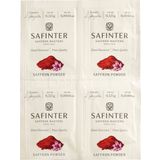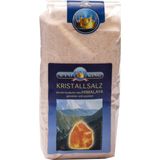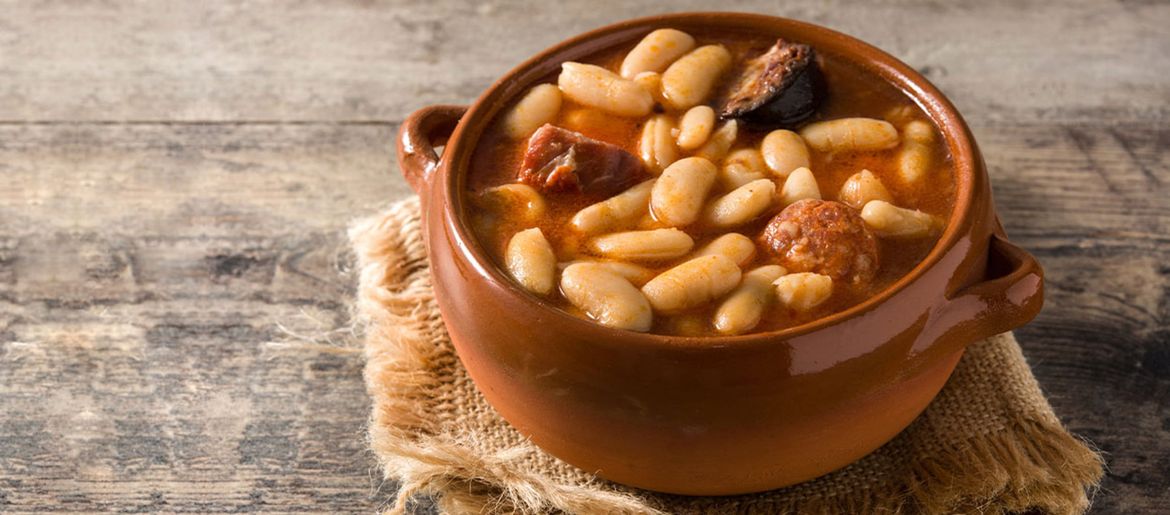Fabada Asturiana - A Classic Recipe from Northern Spain
Asturias, a region in northwest Spain with an Atlantic climate boasts rugged mountains, lush valleys, a wild coastline and rough waves. Outside of Spain, the region is unfairly (or fortunately?) relatively unknown. A wide variety of traditional recipes make Asturians the strong, tough people they are. Unique dishes form its character and its strong gastronomic signature. In northern Spain there are few dishes more iconic than the Asturian bean stew or Fabada Asturiana.
Fabada Asturiana is a typical winter meal in the Asturian region. A delicacy savoured by the spoonful. Gluttony and excess combined into one big stew. The headache of a hungover morning. The pain after a cobra bite. Sundays at grandma's. Or - Every cardiologist's nightmare! Any one of these could be used to describe this dish. But the best description of all? An orgy of flavours in the mouth to celebrate life! But, also unfortunately accompanied by the usual aftermath of almost all dishes with legumes!
To put it more precisely, the lipid bomb that the stomach has to process and the oligosaccharides in the beans that your intestinal flora will feast on require a strong and well-trained digestive system. Asturians can eat a fabada for dinner and easily drift off to a deep, restful night's sleep. Everyone else would be strongly advised to refrain from indulging in Fabada Asturiana on Valentine's Day or any other important day - that special person in your life will thank you!
It is believed that the cultivation and consumption of beans in Asturias date back to the 16th century. Fabada Asturiana was most likely a very simple dish originally, as evidenced by the ingredients used to prepare it. The type of bean most used in the traditional recipe is the “de la Granja”. This variety is much softer than regular beans and has a buttery texture, making it ideal for this dish.
Of course, conventional canned beans or that lonely pack of beans lurking in the far corners of your kitchen shelf can also be used to make a Fabada Asturiana - but this will not result in that authentic Asturian taste.
So, roll up your sleeves! We show you how to prepare the fabada like a real Asturian.
The following recipe (kindly provided by CASA GERARDO - this is a restaurant you MUST visit if you're in Asturia!) serves 8-10 people.
You will need:
- 1 kg dried fabes (large white beans)
- 65 grams butter
- 2 sweet chorizo sausages (smoked if possible)
- 2 blood sausages (black pudding)
- 65 g salted bacon
- 6 grams onion
- 4 g paprika powder (sweet)
- 0.3 grams saffron
- 100 g extra virgin olive oil
- Again 100g extra virgin olive oil (yes, twice)
- Broth (vegetable or chicken broth. Alternatively, you can use water)
- Salt to taste
Method:
- Soak the dried beans in water for 12-14 hours.
- Transfer the beans to a large pot and cover with plenty of water. Choose a pot that is wider than it is tall.
- In another pan, cook the "compango" (that is, the chorizo sausages, the black pudding - aka blood sausage - and the bacon) in water for 5 minutes to release some of the fat. Drain off the water and add the ingredients, whole and uncut, to the beans.
- Next add the butter and the first 100g olive oil to the beans and cover. Cook for about 20 minutes.
- Then add salt and saffron. Adjust the amount of salt as needed depending on how much salt is already in the compango.
- In a separate pan, prepare a "sofrito" with the remaining 100g olive oil and the finely chopped onions. Once the onions are translucent, add the sweet paprika powder and sautee briefly. But be careful - the powder can burn quickly.
- Add the sofrito to the beans and reduce the heat to low.
- The amount of time required to cook the beans depends on how old the beans are and how hard the water is. Check the amount of liquid regularly and add more broth or water as necessary so that the stew does not become too thick.
- A crucial and time-honoured practice during the preparation: DO NOT place spoons, ladles, spatulas, forks, sticks, swords, axes, catapults, crossbows or other implements in the pot. This would damage or mash the beans and spoil them. Traditionally, to stir the Asturian "magic potion" the pot is held by the handles and shaken. When a bean accidentally breaks, it helps the sauce, which is made up of the juices of all the ingredients, acquire the desired consistency.
- Serving: The compango is usually served separately. Take the pieces out of the stew, cut them if desired into pieces and arrange on a serving platter on the table. The faba beans with the broth are served in deep plates at the table. Each diner helps themselves to the compango of their choice.
- To enjoy the full authentic Asturian menu, serve with refreshing sidra or apple cider and delicious arroz con leche or Asturian rice pudding, as dessert.
We wish you every success!
This article was written by Sara, a member of our Translate team from Spain.
Related products
-
 € 12,19 (€ 12.190,00 / kg)
€ 12,19 (€ 12.190,00 / kg)Delivery by April 17
-
 5.0 (84)
5.0 (84)La Chinata Sweet Smoked Paprika, Refill pack, 1kg
Bestseller- Harvested and sorted by hand
- Smoked over oak wood
- Delightful aroma
€ 21,99 (€ 21,99 / kg)Delivery by April 17
-
 € 5,59 (€ 11.180,00 / kg)
€ 5,59 (€ 11.180,00 / kg)Delivery by April 17
-
 4.7 (3)
4.7 (3)BioKing Himalayan Crystalline Salt - Finely Ground, 1.000 g
- Finest table salt
- Gentle manufacturing process
- Completely natural
€ 5,99 (€ 5,99 / kg)Delivery by April 17
Magazine Articles:
Discover Piccantino :
-
Austria: Free standard delivery from € 49,90
-
Free
returns -
24-hour shipping
More than 11.500 products

